Meet the scientists trying to understand the world’s worst wildfires
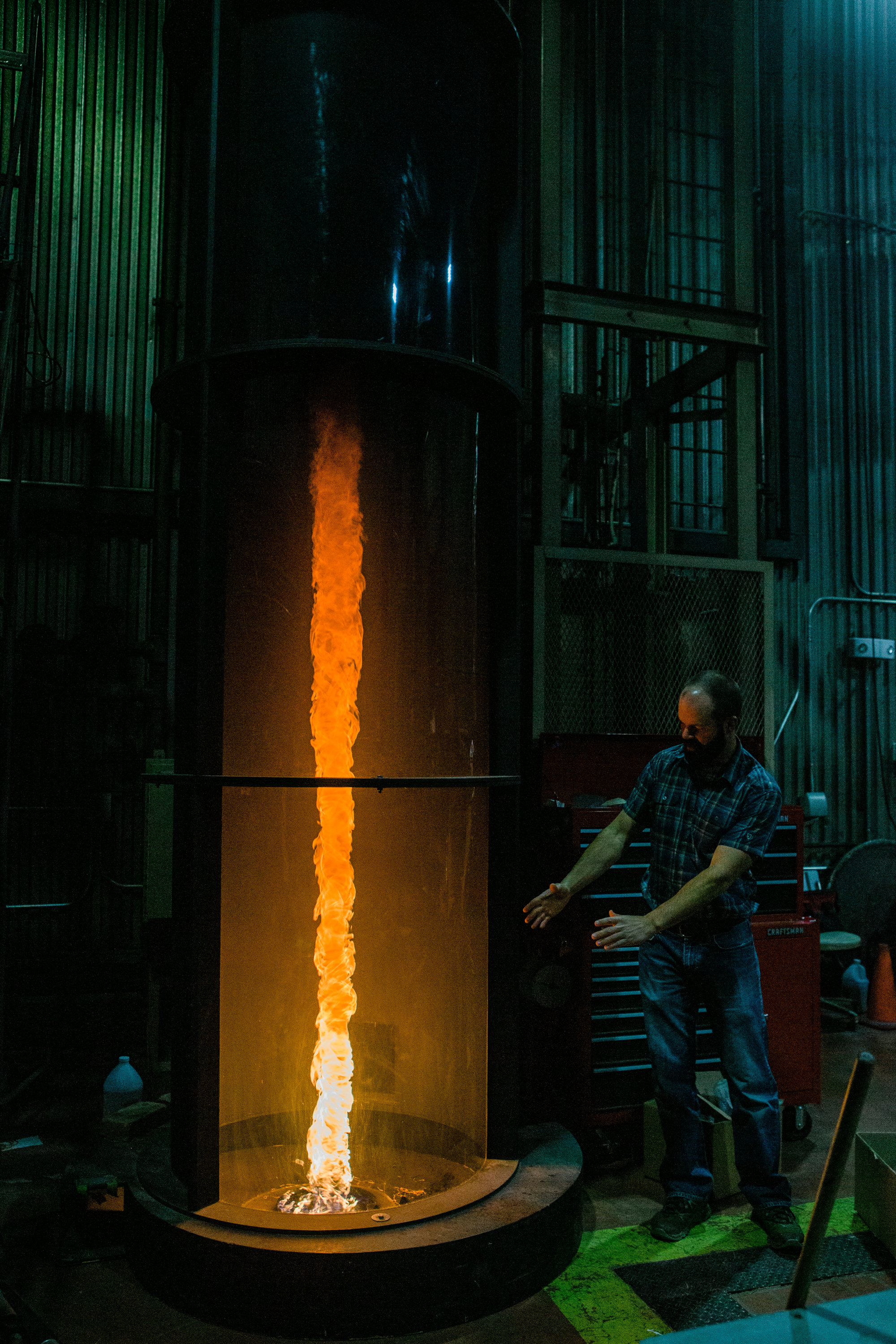
Jason Forthofer had been fighting the Sunrise Fire in southern Montana for more than a week when he made the biggest mistake of his career. He was working with a team at the fire’s edge, digging trenches and lighting controlled “backburn” blazes in the stifling heat, when he heard a rumor about a cabin nearby that might need protection.
Curious and eager to help, Forthofer and his colleague Kevin Beck shouldered their packs early one morning and picked their way up an old mining trail into the nearby forest. Forthofer was on foot, while Beck rode a four-wheeler. Soon they were pushing through thicket, branches snagging the heavy material of their fire-retardant coats. Maybe there were a few clouds overhead; if there were, Forthofer ignored them. The incident meteorologist working with the team had been warning of possible thunderstorms for several days—typical for a Montana summer—but none had materialized.
The cabin, when they found it, was about a half-mile from the road, a rickety mining shack patched together from scrap metal and surrounded by Douglas firs. They surveyed the building: it looked as if people had been there recently, but nobody was home now. Then Forthofer heard a sound that made his stomach drop: the deep rumble of thunder. The tops of the nearby trees began to sway.
Beck jumped on his four-wheeler and Forthofer jogged him, making his way to the road as fast as the thick brush would allow. They’d taken a stupid risk by ignoring the forecasts—and they knew it. An approaching storm could easily kick up dangerous winds, pushing uncontrolled fire toward them at terrible speed.
Forthofer’s panic mounted as the winds increased. Thirty miles an hour. Then 40. As they approached the road, he broke into a run, knowing the flames could reach him at any moment.
Sweating and exhausted, terrified by what could have happened, Forthofer and Beck made it back. They were safe. But one thought played over and over in Forthofer’s mind: I could have died right there. That’s how firefighters die.
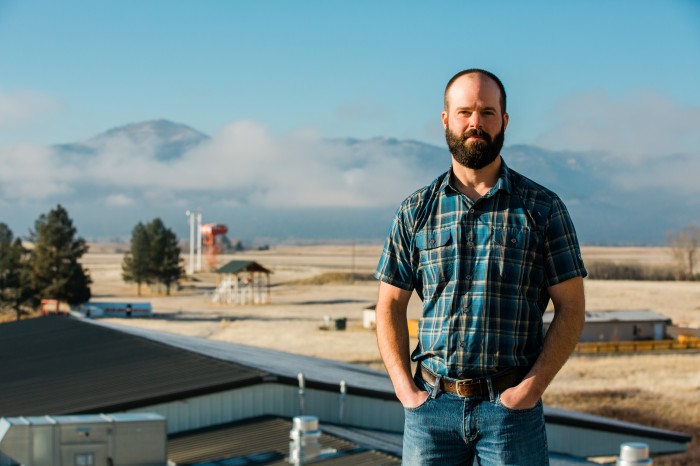
Sunrise was just one of 21 fires that burned Montana over the summer of 2017. But the blaze was mostly contained by the time Forthofer sat at his desk a few weeks later and considered his experience from a different perspective. When he’s not fighting fires directly, Forthofer studies them, working with a group of analysts, biologists, computer programmers, and engineers at the Missoula Fire Sciences Lab in Montana.
His dual roles—on the front line and as a researcher—exemplify the lab’s unique position in American wildfire fighting.
“That context is critical, and it’s not something that most scientists get,” says ecologist Matt Jolly, one of Forthofer’s colleagues. “They're trying to write about wildfire, write about crown fire [in tree canopies]. And they've never seen one!”
The Fire Lab is perhaps best known for the computer programs it produces to forecast wildfire behavior. In 1972, a researcher named Dick Rothermel used a series of simple experiments to create one of the first mathematical models that could predict how a fire might spread. Burning fuel in its wind tunnel, Rothermel controlled for factors like wind speed and then observed his fires as they grew. He plotted the results on a graph and used the data to deduce a set of equations that could be applied to wildfires everywhere. Suddenly, analysts could make predictions about the way a blaze would spread—and the results changed the way experts think about and interact with fire.

Today, the Rothermel model provides the spine for almost every computer program used to analyze wildfire behavior in the US. But although his work was advanced for its time, Rothermel didn’t take into account many of the factors that make fires behave differently in the real world than they do in the limited environment of a lab. His research assumed, for example, that pine needles in a shallow fuel bed would burn the same way as the same needles stacked much higher. Models like Rothermel’s are “only really valid for the range of data and experiments you ran,” says Forthofer. “Outside of that range, it's anybody's guess whether the curve keeps going.”
To compensate, fire behavior analysts have been bolting an almost endless series of adjustments and inputs onto Rothermel’s skeleton so that they can make more accurate predictions about how a particular blaze will progress over the course of hours or days. They incorporate data describing everything from slope to vegetation to canopy characteristics and weather factors. The whole thing is a feat of technology and ingenuity, an attempt to predict something that has been spent centuries being mysterious and unknowable.
Today, though, after decades of drought and rising temperatures, monstrous blazes throughout the American West have brought the system’s weaknesses into focus. Rothermel’s model can’t deal with everything the environment is throwing at it, from the number of dead trees now standing in America’s forests to fluctuating wind speeds.
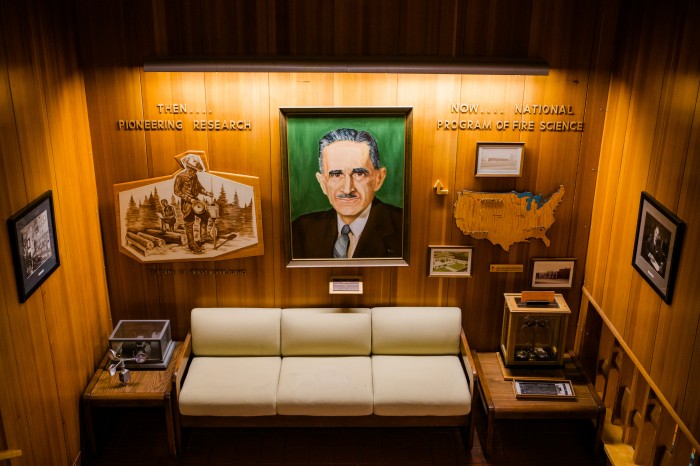
“The tools are not always right,” Forthofer explains. “They’re almost never right, never perfectly right.” And when they’re wrong, it can lead to real and serious consequences: lost money, lost homes, or—worst of all—lost lives.
So, with infernos eating through tens of thousands of hectares and killing more people each year, the Fire Lab is trying to build a brand new model for the first time in half a century. There’s a lot of catching up to do.
One afternoon in July 2019, Forthofer gives me a tour of the lab, accompanied by his boss, Mark Finney. Firefighting is never far away for Forthofer—his brother and wife were both firefighters, and many of his friends still are—and he has the solid physique of someone who regularly hikes with 100-pound packs. Finney, by contrast, is wiry and angular, with silvering temples and a tendency to speak in short bursts.
Starting in the building’s foyer, idiosyncratic touches abound. A stuffed mountain goat presides over the front desk area (“Please do not touch the goat,” pleads a nearby sign). A wildfire-themed patchwork quilt from 2010 commemorates the lab’s 50th anniversary.
Outside, clouds race across the plains, but you wouldn’t know it inside the cavernous, windowless space of the test laboratory, whose towering internal walls are made of corrugated metal. We stop in front of a hulking slab filled with sand, which Forthofer and Finney explain is essentially a giant burner. They point out the custom propane jets underneath, which allow them to precisely control the intensity of the flames and take exact measurements as they burn.
The lab has nicknamed the table “Big Sandy,” Finney tells me. (They’ve christened similar burners “Little Sandy” and “Big Bertha.”) One of Big Sandy’s signature experiments measures flame length, temperature, and pressure in a fire that starts in a straight line. Rows of laser-cut cardboard tines burn up one by one in an almost liquid movement as a line of flames as high as 8 feet tall spreads across them, forming a wave of peaks and troughs.
Measurements on Big Sandy have shown that these shapes are caused by cold air pushing the flames intermittently down into their fuel bed, driving the combustion process. A video recording put through a “flow trace” analysis adds thin green lines that make it easier to track that movement. It shows how this cold air spins into a series of small whirls, or vortices, when the gases in front of the flames rise and fall as they heat and cool. Without that movement, flames wouldn’t move forward, Finney explains; they’d simply float above their fuel and eventually go out.
In an office down the hall from Big Sandy, fire analyst Chuck McHugh takes me through some of his work. The models he shows me from past wildfires look like tangles of red squiggles and colored blotches overlaid on maps. In fact, he explains, the red lines document possible paths that the fire might take; the colorful shapes indicate the number of hours the fire might take to spread to that area. On some of the maps, these blobs are surrounded by bubbly spot fires, “ignitions” where the software guessed that sparks might leap away from the main blaze. The whole thing resembles a slime mold, organic and alive—which, in a way, it is.
Everywhere we walk, the team is trying to better understand and predict fire behavior. Upstairs are the wind tunnels, where Forthofer and his colleagues record how fires are affected by air at different speeds. He also shows off a tall, black metal apparatus whose curved base generates the airflow necessary to create (and study) 10-foot fire tornados. We finish our tour in a room full of foam-and-metal contraptions for measuring how heat moves through the air to ignite new fuel as a fire starts The whole place, they explain, can be set to a specific air temperature and humidity or opened for ventilation in case of emergency.
Finney says all this complexity shows that Rothermel’s work just isn’t enough anymore.
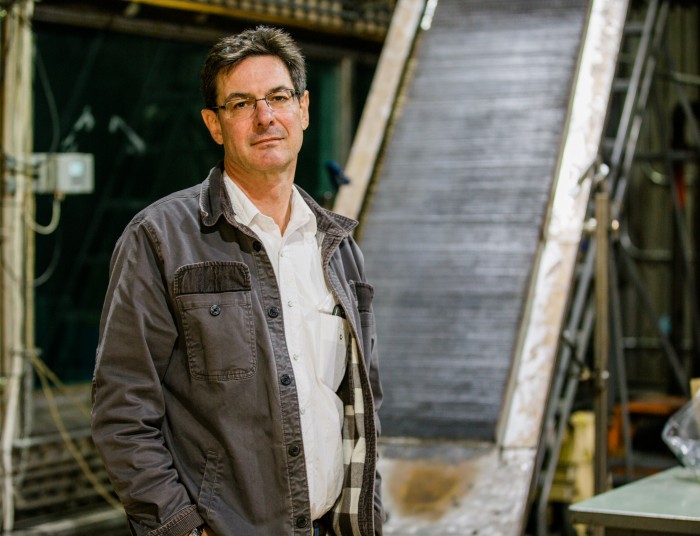
“Just because you have a model,” he says, “doesn’t mean you understand something.”
Wildfire is full of small-scale processes like Big Sandy’s vortices. Each piece of the research the Fire Lab undertakes is an attempt to study a tiny part of the big picture. And it’s particularly important with elements like wind, which both affects how fire behaves and goes on to be affected by fire. The Rothermel model, Finney argues, comes nowhere close to accounting for the feedback loops and strange behavior thresholds in a complex system like that.
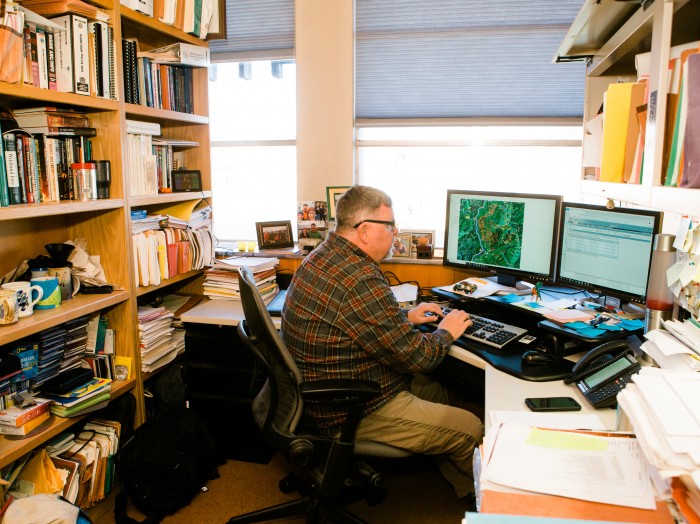
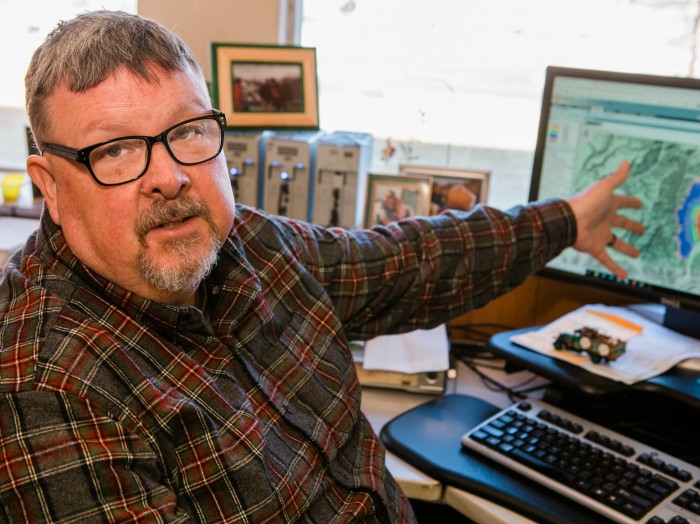
Chuck McHugh analyzes fire activity and the probability of spread. His calculations determine if action needs to be taken—or no action at all.
That’s why he’s after something new: a complete theory that can explain fire behavior, not just predict it.
The pursuit of a complete fire theory drives the Fire Lab’s work in a number of areas, from fluid dynamics and convective heat transfer to “resonance time”—the period a fuel particle like a pine needle will continue to release energy after it’s ignited. By combining all these smaller models, Forthofer and Finney hope to create a larger one that can explain those phenomena in the wild.
“The same physical processes that cause a giant crown fire with 200-foot flames to spread are part of a little fire with one-foot flame spreading in our tunnel,” Forthofer says.
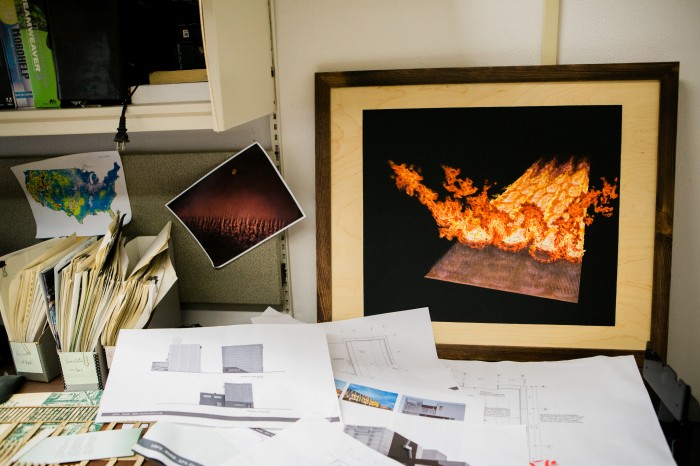
Finney compares his task to reverse-engineering a recipe from a set list of ingredients. He and his colleagues have already assembled their basic elements: radiation, convection, fuel, heat, oxygen. But “we don’t actually have the amounts of each or the order of each or the preparation instructions,” he says.
Although Rothermel’s work has had enormous impact, it is not the only game in town. Canada developed its own system, Prometheus, in the early 2000s. Scientists in Australia, meanwhile, use their own computer programs that fit the quirks of Outback bushfire. The Rothermel model, though, remains the standard. Alen Slijepcevic, a deputy chief of the Country Fire Authority in the Australian state of Victoria, has been watching the Missoula Fire Lab’s quest with interest. “All that work will have a global implication, no question,” he says.
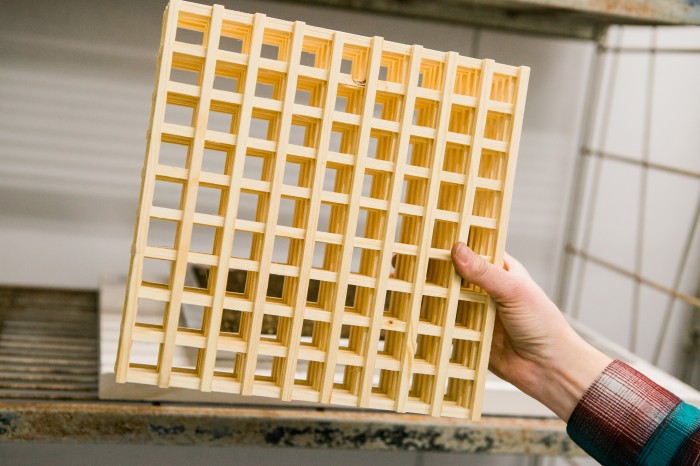
Elsewhere, some institutions have turned to a different approach, known as computational fluid dynamics (CFD), which models how fluids and gases move. The technique divides an area into a mesh of small units and calculates how each piece could interact with the others. The results can mimic real fire behavior more precisely.
The trouble is that this requires vastly more computing power than a program based on Rothermel’s system. Running a single CFD model can take days: the National Weather Service has to use supercomputers in order to run CFD models that can predict weather faster than real time. This makes it unlikely that the technology will be used to predict the behavior of wildfires any time soon: when a blaze springs up, frontline analysts are often crunching hundreds of simulations while working in remote locations where infrastructure is faltering and internet connections are poor. They need programs that can run on a standard laptop—and fast. After all, as National Institute of Standards and Technology mathematician Kevin McGrattan explains: “It’s no use telling someone that the hurricane was going to hit New Orleans last week.”
Forthofer, Finney, and their colleagues hope the model they’re building will represent a middle ground: smart enough to make better predictions, with CFD-like elements that can account for factors like wind turbulence, but simple enough to run in the field.
McGrattan sees potential for a hybrid model, although he adds a significant caveat— that the first step must be to train more people to use existing programs. At a recent meeting, Forest Service representatives told him that Rothermel-based models are used mainly for pre-planned, controlled burns. “When all hell breaks loose in Somewhere, California, there’s just not time to get a person with that kind of expertise on the ground running the model,” he was told.
The need to bring wildfire models up to date seems more pressing than ever. Large and ferocious wildfires have raged more frequently in parts of the American West in recent years, as well as around the world.
In the United States, the number of acres burned annually by wildfires has increased 500% since the 1970s. Hundreds of people have died and thousands of homes have been destroyed this decade in California fires alone. In 2018, the worst wildfire season on record saw major blazes like the Carr Fire and the Mendocino Complex Fire destroy millions of acres in August; a few months later, the Camp Fire killed at least 86 people and erased the entire town of Paradise.
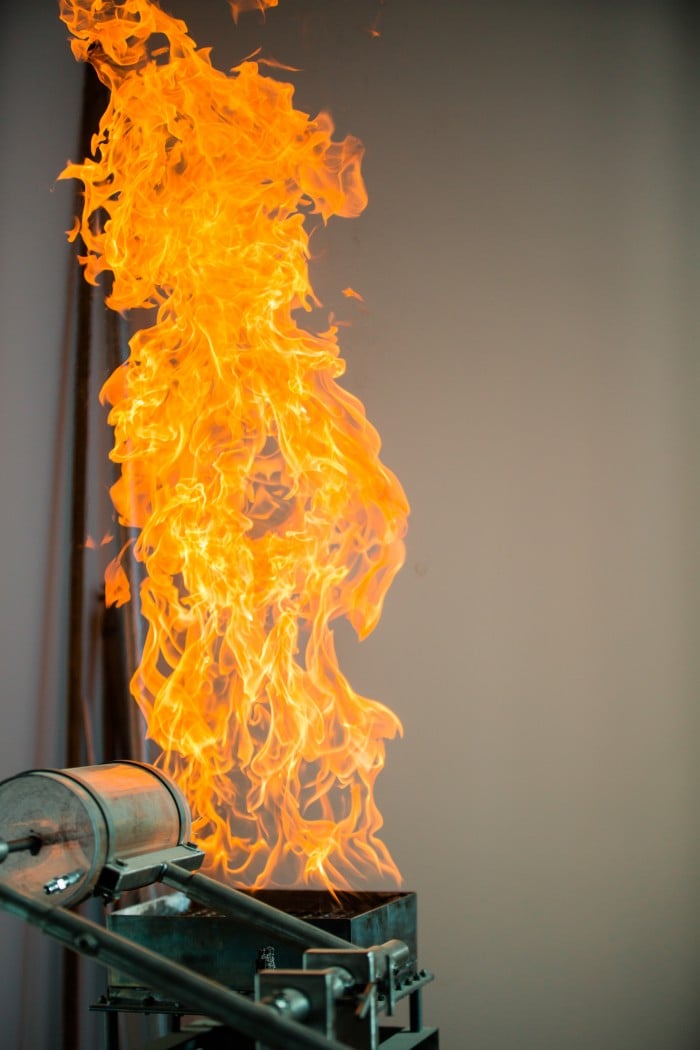
But shrinking the gap between model and reality is only the first step to addressing these catastrophes.
Firefighters tend to be slow to trust technology over what they’ve observed or experienced, especially when their survival is at stake. They learn to rely on their intuition, just as Forthofer did when he brushed off the thunderstorm warnings at the Sunrise Fire. “You’re forced to make decisions in situations where you have incomplete knowledge,” he says. “And you’re not quite sure of the credibility of the things you know.”
But as his Fire Lab colleague Matt Jolly points out, this can have terrible consequences when the conditions are so extreme that nobody has seen them before. When experience fails, tools become increasingly valuable—and as the climate shifts, experience will continue to fail more and more often.
In the world of firefighting, a 2013 incident that took place in Yarnell Hill, Arizona, is considered the worst example. That June, 19 firefighters were killed when winds changed dramatically ahead of a thunderstorm that had been predicted by the National Weather Service. They ended up trapped, making Yarnell Hill the deadliest wildfire for firefighters since 1933. “It sends chills up your spine,” Forthofer says, noting the parallels to his own experience. “That shouldn’t happen.”
It’s why Jolly and Forthofer emphasize training and education, sharing new tools with reliable “early adopter” firefighters who will champion them to others. Their ability to code-switch between the parlance of academic research and the language of hotshot battalions comes in handy.
Jolly in particular spends much of his time at roundtable meetings with fire managers and incident commanders, workshops for fire behavior analysts, and other professional training events, asking “What do you need? What would make this tool better?”
In his office at the Fire Lab, papered with his daughter’s art projects and ephemera from a life spent outdoors, Jolly pulls up the PowerPoint presentation he uses to show off the lab’s offerings. His graying hair flops over his forehead as he rubs his eyes repeatedly; he looks a bit like an older rock star the morning after a hard night. (He’s not, and it isn’t.)
He shows me a multicolored map based on a fire danger rating system he helped develop. The green areas represent normal weather conditions, while reds represent extreme heat, wind, or dryness at a level seen in only 3% of days in recorded history. He created this tool to help prevent the kind of tragedy that happened at Yarnell Hill, he tells me. Two thirds of all wildland firefighter fatalities happen on those days, when the potential is highest for extreme fires.
He flicks through several of these maps, pointing out the red spots. Here were conditions before an Oklahoma grass fire that spread to tens of thousands of acres in one day. These red splotches represent areas in Napa and Sonoma at the time of the fires that consumed wine country in 2016. And that little red dot next to Los Angeles marks the Thomas Fire, the first time firefighters in California worked a wildfire on Christmas Day.
He continues through the slideshow, walking me through maps of California’s biggest recent fires: the Carr Fire, the Mendocino Complex Fire, the Camp Fire that wiped out Paradise.
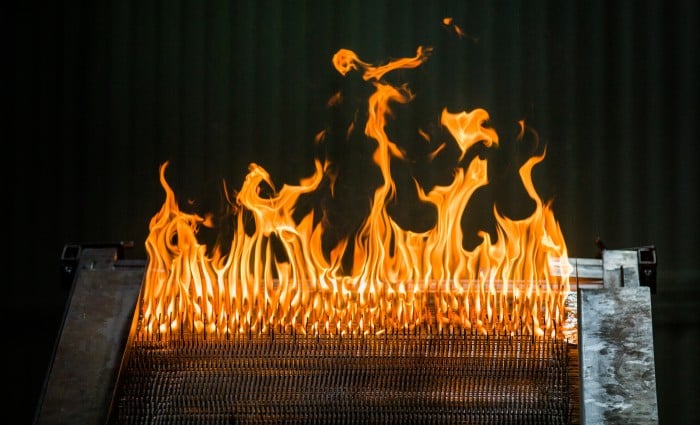
“So you were able to produce these maps using the data that would have been available that day?” I ask. He shakes his head. The maps themselves were available for use by firefighters and analysts on those days, both before they reached the scene and while they were there, he tells me.
“So the whole idea that we didn’t see it coming or that it caught us off guard …” He bites his lip. “We need to do better with that.” A deeper understanding of fire, or a new model—these are meaningless achievements without widespread adoption, he says. “If it doesn’t change behavior, they’re useless.”

Down the hall, Forthofer envisions a transformation of firefighting culture. Teaching an updated model, a new theory that really explains why and how it behaves certain ways, could spark that change. It could provide his colleagues with a new way to understand the things they see. With enough effort, it could prevent close calls like the one he had at the Sunset Fire, it could protect people’s homes, and most important, it could save lives.
Between that day and today, however, lies this fire season, and the next one, and the one after that. Along the way, Forthofer will spend his summers fighting fires and his winters measuring them in the lab with Finney. McHugh and his fellow analysts will keep coaxing their models toward reality, and Jolly will continue traveling the country talking to hotshots, brigade commanders, and utility managers.
And the fires will keep coming.
—Alissa Greenberg (@alissaleewrites) is an independent journalist who reports at the intersection of culture, science, business, and international affairs.
Deep Dive
Climate change and energy
The problem with plug-in hybrids? Their drivers.
Plug-in hybrids are often sold as a transition to EVs, but new data from Europe shows we’re still underestimating the emissions they produce.
Harvard has halted its long-planned atmospheric geoengineering experiment
The decision follows years of controversy and the departure of one of the program’s key researchers.
Why hydrogen is losing the race to power cleaner cars
Batteries are dominating zero-emissions vehicles, and the fuel has better uses elsewhere.
Decarbonizing production of energy is a quick win
Clean technologies, including carbon management platforms, enable the global energy industry to play a crucial role in the transition to net zero.
Stay connected
Get the latest updates from
MIT Technology Review
Discover special offers, top stories, upcoming events, and more.